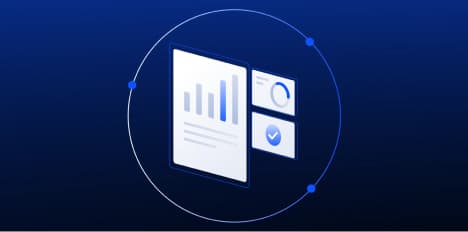Explore the
BigCommerce platform
Get a demo of our platform to see if we’re the right fit for your business.
Not ready for a demo? Start a free trial
What B2B Distributors Gain from Modern Ecommerce Investments

Written by
Ramanathan Ramakrishnamurthy11/09/2025


What B2B Distributors Gain from Modern Ecommerce Investments
Get The Print Version
Tired of scrolling? Download a PDF version for easier offline reading and sharing with coworkers.
A link to download the PDF will arrive in your inbox shortly.
B2B buyers are no longer satisfied with experiences that simply match B2C standards. Nearly 80% of B2B buyers expect the same level of digital experience they get as B2C customers, demanding more than just convenience. They seek speed, transparency, and tailored engagement.
They don’t just want a simple self-service portal; they expect seamless quoting, contract-specific pricing, real-time inventory updates, and multi-location fulfilment. In fact, 75% of buyers now prefer a rep-free sales experience, and 83% prefer ordering or paying through digital commerce.
The shift is accelerating: the B2B ecommerce market is projected to reach approximately $32 trillion in 2025, up from about $28 trillion in 2024, growing at a 14–18% CAGR. By 2025, 80% of all B2B sales interactions are expected to occur via digital platforms, with more than 50% of revenue generated from digital channels.
If your digital storefront is slow, disjointed, or hides critical pricing behind logins, you risk losing serious buyers. B2B buyers have fast‑paced procurement needs and won’t wait.
That’s why modern purpose-built B2B platforms are no luxury but they’re essential. B2B distributors must adopt advanced ecommerce solutions like BigCommerce development services, not to chase trends but to meet expectations that now surpass even top-tier consumer experiences.
Why should B2B distributors invest in a better digital experience?
B2B buyers are operating in a fully digital ecosystem. They are no longer tolerant of outdated portals, delayed quotes, or disconnected systems. The expectation is clear: real-time inventory visibility, contract-level pricing, and effortless transactions across devices and channels.
Three forces are accelerating this shift.
Digital-first procurement is now the default: Most B2B buyers say their latest purchase was complex or difficult. They begin their journey online, often conducting extensive research before contacting a vendor. If your platform does not offer instant access to accurate product data and pricing, you are invisible at the moment that matters.
Omnichannel expectations are non-negotiable: B2B buyers expect a consistent experience whether they’re transacting through a website, mobile app, marketplace, or procurement system. Recent research shows that companies with strong omnichannel capabilities retain customers at significantly higher rates.
Legacy systems create costly friction: Disconnected ERPs, outdated customer portals, and manual workarounds slow down the sales cycle. They also make it harder to scale. Businesses that continue to rely on fragmented systems increase their operational costs and limit their ability to serve high-value accounts efficiently. This is not a gradual transition. Buyers have already moved on. Those who fail to meet these new expectations risk losing market share to competitors who offer faster, more intelligent, and more transparent digital experiences.
Takeaway: The longer businesses hold on to the old ways, the more they risk alienating a generation of buyers who do not tolerate friction.

Comparison of modern B2B buyer expectations vs outdated distributor offerings
What do distributors gain from a modern ecommerce investment?
Investing in a modern ecommerce platform isn’t about digital transformation for its own sake. It’s about solving real problems across the buyer journey, operations, and growth strategy while directly impacting the bottom line.
1. A buying experience that drives loyalty.
B2B buyers are not browsing. They’re purchasing with urgency and intent. A modern ecommerce platform delivers the speed, transparency, and personalization they expect, including real-time inventory visibility, account-level pricing, and frictionless checkout. These capabilities increase repeat purchases, reduce service calls, and improve retention over time.
2. Operational efficiency at scale.
Legacy systems come with a cost, like delayed orders, data errors, and manual coordination. By integrating ERP, CRM, PIM, and order workflows into a single ecommerce backbone, distributors eliminate inefficiencies and reduce dependency on internal support teams. The result is a faster quote-to-cash cycle and lower operational overhead.
3. The flexibility to grow without friction.
Modern platforms are designed to scale. Whether it’s launching into a new region, setting up a branded portal for a key account, or selling through third-party marketplaces, these systems are built to move quickly. With tools like BigCommerce, distributors can manage large catalogs, multiple storefronts, and variable pricing models without slowing down execution.
4. Data that informs smarter decisions.
Every buyer interaction generates insight. A modern ecommerce engine captures that data in real time, enabling forecasting, upsell targeting, and product planning that reflects actual demand. Distributors gain visibility not just into what’s selling, but into how customers are behaving and how to meet them earlier in the buying cycle.
5. Competitive separation in a saturated market.
Buyers will choose partners who are easier to work with. Subscription models, punchout catalogs, quick reorder tools — these aren’t innovations anymore, they’re expectations. Distributors that offer them build trust and win long-term contracts. Those who don’t risk being replaced.
The global distributor environment
According to Bloomreach, 56% of distributors have digital transformation plans underway. But even with that momentum, only 40% of total distributor revenue is coming from online channels.
Among those who have gone digital:
Conversion rates are higher
Order sizes are larger
Repeat customer rates are stronger
Growth is measurably faster
And those who moved early are pulling ahead. Not because they sell better products, but because they sell them better.
Why does timing in ecommerce modernization matter?
The cost of delaying ecommerce modernization is rarely visible in the short term but it compounds quickly. On the surface, the site is operational, orders continue, and internal workarounds keep things moving. But beneath that surface, critical gaps are forming across buyer experience, revenue performance, and competitive positioning.
1. Revenue lost, not deferred.
Legacy platforms create friction that directly impacts sales. Slow page loads, missing product data, and broken checkout flows don’t just inconvenience buyers; they create drop-off points in high-value transactions. In B2B, where repeat orders and contract-based relationships matter, every failed interaction carries long-term cost. Abandoned carts may never return, and buyers who switch rarely come back.
2. Rising customer churn.
Today’s B2B buyer expects speed, clarity, and control. They expect to search, configure, and purchase without needing a sales call. When that experience isn’t available, they leave. Modernization is no longer a differentiator; it is a retention tool. And as digital-native procurement teams become the norm, companies that fail to meet their expectations will lose relevance.
3. Competitive gaps that widen over time.
While some teams delay digital investment, others are moving fast, like improving integrations, building mobile-first storefronts, and deploying AI-enabled personalization. These investments raise the standard across the market. Every new customer they convert makes it harder for slower competitors to catch up. The advantage is not temporary. It accelerates quarter after quarter.
Takeaway: Every quarter spent on outdated systems is not a neutral choice. It is lost efficiency, lost trust, and lost ground. The organizations that act early set the benchmarks in B2B ecommerce development. Those who wait are forced to follow.
Modernization is not a technical upgrade. It is a strategic move, and timing is the variable that decides whether it drives growth or merely helps you survive.

Chain reaction of revenue loss caused by legacy technology delays
How does BigCommerce empower B2B distributors?
B2B distribution operates on a different scale and structure from B2C commerce. It involves contract-based pricing, customized catalogs, approval workflows, and integration into enterprise procurement systems. BigCommerce is built with these complexities in mind and not as add-ons, but as core capabilities.

Mapping of BigCommerce features to impact across business functions
Custom pricing and punch-out catalogs.
Enterprise buyers expect to see their negotiated pricing, terms, and catalog access and not public-facing product pages. BigCommerce supports punch-out catalogs and account-level pricing, allowing your buyers to transact directly through their procurement platforms. This eliminates manual quote handling and accelerates order processing.
ERP, CRM, and fulfillment integrations.
Disconnected systems slow down operations and introduce errors. BigCommerce offers native integrations and flexible APIs that link directly with your ERP, CRM, and warehouse systems. This ensures that order data, inventory levels, and customer records remain synchronized across platforms in real time, reducing manual intervention and improving fulfillment accuracy.
Mobile-first and headless architecture.
Whether buyers are placing orders from a desktop in procurement or a mobile device in the field, the experience must be seamless. BigCommerce delivers consistent performance across devices and channels. Its headless architecture allows teams to customize the front-end while keeping the backend stable and critical for businesses operating across multiple brands, geographies, or customer segments.
Low TCO.
Legacy systems demand ongoing customization, expensive maintenance, and long deployment cycles. BigCommerce’s modular, SaaS-based platform simplifies implementation, shortens upgrade timelines, and reduces infrastructure costs without compromising on functionality or scale.
BigCommerce gives B2B distributors a way to modernize without increasing operational burden. From procurement integration to real-time data flow, BigCommerce Development Services delivers the control, agility, and cost-efficiency required to compete and grow in today’s digital supply chain.

Connected tech components delivering a seamless B2B buyer experience
Why should you upgrade your B2B store now?
B2B buyers no longer tolerate outdated, transactional experiences. Their expectations go beyond B2C; they demand contract-specific pricing, multi-user account control, seamless procurement integrations, and multi-location fulfillment. And they expect all of this to work reliably, across every device.
This shift isn’t hypothetical. According to McKinsey, 70% of B2B decision-makers are now comfortable making new, fully self‑serve or remote purchases over $50,000. Buyers are not browsing casually; they’re making high‑value, high‑intent decisions. They expect digital platforms to match the pace and precision of their needs.
Upgrading your ecommerce stack today is no longer about visibility; it’s about operational performance. Distributors that modernize gain speed, visibility, and adaptability. Modern platforms drive measurable gains: shortened sales cycles, fewer manual errors, higher retention, and new digital revenue streams.
BigCommerce equips B2B distributors with the infrastructure to lead rather than follow. Its native support for procurement workflows, agility in configuration, and scale-friendly architecture reduce cost and accelerate ROI.
This is not about reacting to a digital trend. It’s about asserting digital leadership before competitors claim the advantage.

Cycle of improved digital experience driving retention and conversions
Actionable next steps.
Your buyers expect more. Faster service, smarter personalization, and seamless transactions. Your internal teams need platforms that enable growth, not restrict it.
If your current system is not built to handle that, it is no longer just a tech issue. It is a barrier to scale.
Ziffity is a trusted BigCommerce Partner Agency helping B2B distributors turn intent into execution.
Request a 30-minute assessment with a BigCommerce B2B expert, powered by Ziffity.
You will walk away with a clear view of:
Where your platform is falling short
What your buyers expect but are not getting
How top B2B brands are solving these gaps quickly and efficiently
Let us talk. One session. No pressure. Just clarity.

Evaluation grid to identify gaps in B2B digital capabilities
The final word
There comes a point in every B2B company’s growth where legacy systems begin to limit progress. Orders increase. Customer expectations evolve. What once worked starts creating friction, like manual processes, disconnected tools, and delayed responses.
This is when leading businesses turn to platforms like BigCommerce. Not for flash, but for function. It gives teams the space to re-architect operations, simplify complexity, and build for scale.
The objective isn’t just launching a store. It’s about building a digital infrastructure that mirrors how your business works and how your buyers want to engage.
If your current platform is holding you back, now is the time to rethink what your ecommerce foundation should be doing for you.


